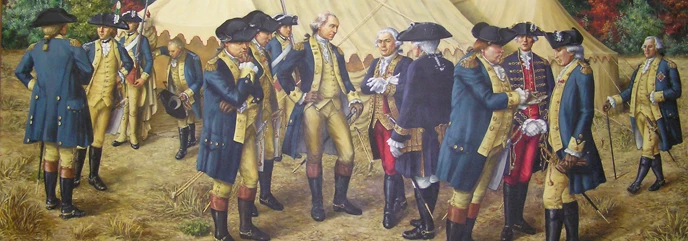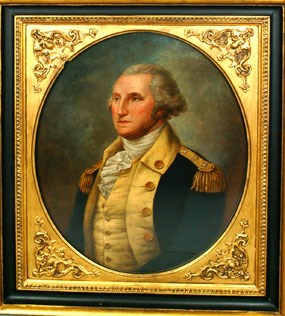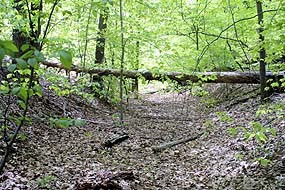
Colonial National Historical Park 
Morristown National Historical Park The French ConnectionBy the winter of 1780, the outcome of the Revolutionary War was anything but certain. In October 1777, the Americans captured Fort Saratoga in upstate New York, which convinced the French to support the colonial war effort. That winter, however, the British took control of the American capital of Philadelphia, and already possessed New York City. General George Washington’s Continental Army passed a difficult winter at Valley Forge. A number of port cities in the South had fallen into British hands. Yet, in February 1778, the French signed the Treaty of Alliance with the American delegation in Paris. Neither side believed it would be worthwhile to send French troops across the Atlantic Ocean, but by 1780, it became necessary. General Jean-Baptiste Donatien de Vimeur, the comte de Rochambeau, arrived in Newport, Rhode Island, with over 5,000 men in July 1780. Rochambeau's army remained idle for over a year. In that time, Native Americans from the Oneida and Tuscarora tribes met him at Newport, remembering their loyalty to the French from the Seven Years' War (1754-1763). In September, Rochambeau met with General Washington. They hoped to launch an attack on General Henry Clinton's army in New York, but it was too late in the year. The French spent the winter of 1780-81 in Newport. The March to YorktownGenerals Washington and Rochambeau hoped to strike New York during the summer of 1781. On July 6, Rochambeau’s French army and Washington’s Continental Army, totaling 9,300, met in Westchester County, New York. Noticing that General Charles Cornwallis was virtually unopposed in the South, they decided to march to Virginia. In the meantime, Marie-Joseph Paul Yves Roch Gilbert du Motier, the Marquis de Lafayette, positioned his command of the Continental army across the James River from Conrwallis, who held Richmond. Conwallis led his army toward Yorktown, digging fortifications in early August. If the Continental Army and the French navy reached the coastal town in time, they would prevent Cornwallis from leaving. The army followed the King’s Highway, which followed much of Route 1. It stretched from Boston to Charleston, South Carolina. The cavalry and supply trains camped near Dumfries on their way to Yorktown. On September 25, most of the French and Continentals camped at Williamsburg. After over a two week siege, Cornwallis surrendered to Washington on October 18. Though a peace treaty would not be signed for two more years, the war was over. By December, King George III and Parliament recognized the Thirteen Colonies “to be free Sovereign and independent States.” The French army sailed from Newport to the Caribbean that same Christmas Day. 
National Park Service Washington-Rochambeau Revolutionary RouteOn the march north, Rochambeau's forces used the King's Highway and the Potomac Path. Part of the Potomac Path is preserved in the Crossing Trail at Prince William Forest Park (shown right). The Washington-Rochambeau Revolutionary Route National Historic Trail, follows the route the two armies followed to and from Yorktown. Prince William Forest Park is part of the national trail, and the portion of the route that is part of the Crossing Trail is the longest preserved stretch of Washington and Rochambeau's original route. 
America 250 250th Anniversary of American Independence2026 will mark the 250th anniversary of the signing of the Declaration of Independence. The National Park Service and the U.S. Semiquincentennial Commission (America 250) have partnered to commemorate the anniversary. The partnership will enrich efforts to educate and inspire as the nation begins the countdown to the largest and most inclusive commemoration in the nation’s history. The commemoration period will launch on July 4, 2020 and continue through 2026. During that time, America 250 and the NPS will work to connect all Americans, as well as international friends, with the country’s heritage and continuing journey. |
Last updated: February 17, 2024
